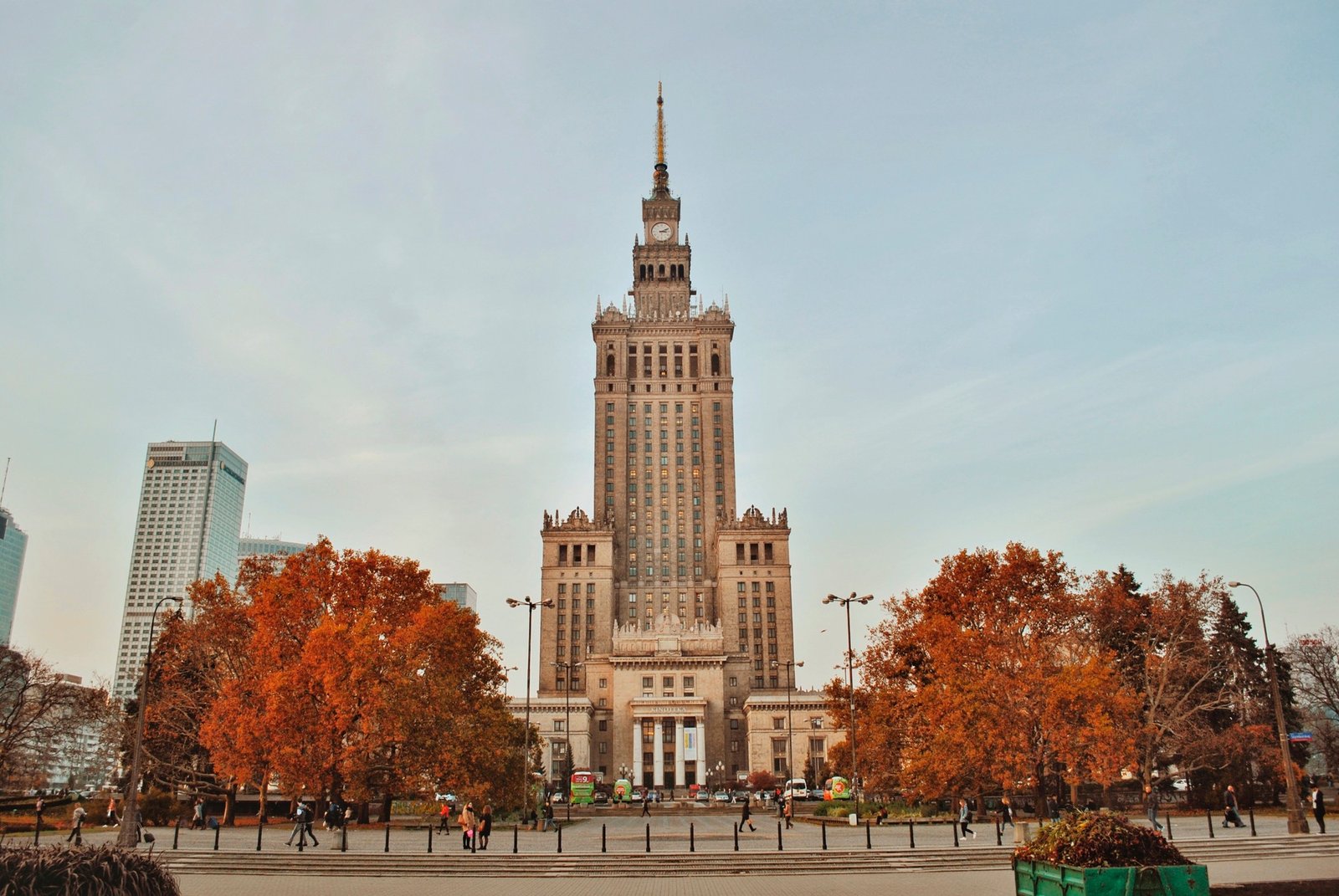Palace of Culture and Science in Warsaw, Poland’s vibrant capital, is a city where palace culture and scientific innovation coexist harmoniously. This blog post delves into how Warsaw’s rich palace heritage intersects with its cutting-edge scientific endeavors. By the end of this guide, you’ll gain a deeper appreciation of Warsaw’s unique blend of historical grandeur and modern intellectual achievement.
Table of Contents
TogglePalace of Culture and Science in Warsaw Heritage
The Royal Castle
One of Warsaw’s most iconic landmarks is the Royal Castle, a symbol of Polish royal history. Situated in Castle Square, the Royal Castle was once the residence of Polish monarchs and is now a museum showcasing royal art and artifacts. Its magnificent architecture and richly decorated interiors offer a glimpse into the opulent lifestyle of the Polish kings.
Wilanów Palace
Another gem in Warsaw’s palace culture is Wilanów Palace, often referred to as the “Polish Versailles.” This Baroque masterpiece, built in the late 17th century, is renowned for its stunning gardens and ornate rooms. Wilanów Palace has been meticulously preserved and serves as a cultural and historical center, offering visitors a window into Poland’s aristocratic past.
Warsaw’s rich palace culture and scientific advancements are seamlessly interwoven with contemporary initiatives like those at The Greenbelt Cultural Center. This innovative institution not only serves as a hub for cultural and artistic events but also emphasizes the intersection of history and modern science through its diverse programming. The Greenbelt Cultural Center often hosts exhibitions and events that explore the historical context of Warsaw’s palaces alongside interactive science displays, providing a dynamic platform where historical grandeur and scientific inquiry converge. This integration enhances visitors’ understanding of Warsaw’s heritage while showcasing the city’s commitment to advancing both cultural and scientific knowledge.
The Science Scene in Warsaw
University of Warsaw
The University of Warsaw, founded in 1816, is one of Poland’s leading research institutions. It plays a crucial role in advancing scientific knowledge across various fields, from humanities to natural sciences. The university’s research centers and facilities contribute significantly to both national and international scientific communities.
Copernicus Science Centre
For those interested in interactive science exhibits, the Copernicus Science Centre is a must-visit. Named after the famed astronomer Nicolaus Copernicus, this modern science museum offers hands-on exhibits and educational programs. It is dedicated to making science accessible and engaging for visitors of all ages.
Warsaw’s rich palace culture and vibrant scientific community are thoughtfully highlighted through platforms like Culture Grams. This resource offers comprehensive insights into the city’s historical landmarks, such as the Royal Castle and Wilanów Palace, while also detailing Warsaw’s significant contributions to science. By integrating historical and contemporary data, Culture Grams provides a holistic view of how Warsaw’s regal past and scientific progress are intertwined. This approach not only enriches understanding of the city’s heritage but also underscores how historical contexts shape and influence modern scientific achievements.
Bridging Palace Culture and Science
The Role of Museums and Educational Programs
Warsaw’s museums, such as the Royal Castle and Wilanów Palace, not only preserve the city’s rich history but also collaborate with scientific institutions to offer educational programs. These initiatives often include lectures, workshops, and interactive exhibits that link historical knowledge with contemporary scientific insights.
Cultural Events and Scientific Symposia
Warsaw frequently hosts events that bridge the gap between cultural heritage and scientific advancement. For example, historical exhibitions might incorporate scientific analysis techniques, while scientific symposia could explore the historical context of scientific discoveries. These events enrich the public’s understanding of both fields and highlight the dynamic interaction between them.
Practical Tips for Exploring Warsaw’s Palaces and Science Centers
Planning Your Visit
To make the most of your visit to Warsaw’s palaces and science centers, consider these tips:
-
Plan Ahead:
Check opening hours and any special events at the Royal Castle and Wilanów Palace before you go.
-
Purchase Tickets in Advance:
For popular attractions like the Copernicus Science Centre, buying tickets online can save time and ensure entry.
-
Use Public Transportation:
Warsaw’s efficient public transport system can easily take you between the city’s major cultural and scientific landmarks.
Engaging with Local Experts
For a deeper experience, look for guided tours that offer insights into both historical and scientific aspects of Warsaw. Local experts can provide valuable context and enhance your understanding of the city’s unique blend of palace culture and scientific progress.
Conclusion
Palace of Culture and Science in Warsaw have rich palace culture and vibrant scientific community create a unique tapestry of history and innovation. By exploring landmarks like the Royal Castle and Wilanów Palace, alongside scientific institutions such as the Copernicus Science Centre, you can gain a comprehensive understanding of how Warsaw seamlessly integrates its past with its present. Whether you’re a history enthusiast or a science buff, Warsaw offers a wealth of experiences that celebrate both its royal heritage and its scientific achievements.
Explore Warsaw and witness firsthand how its majestic palaces and cutting-edge science centers together shape the city’s cultural and intellectual landscape.



